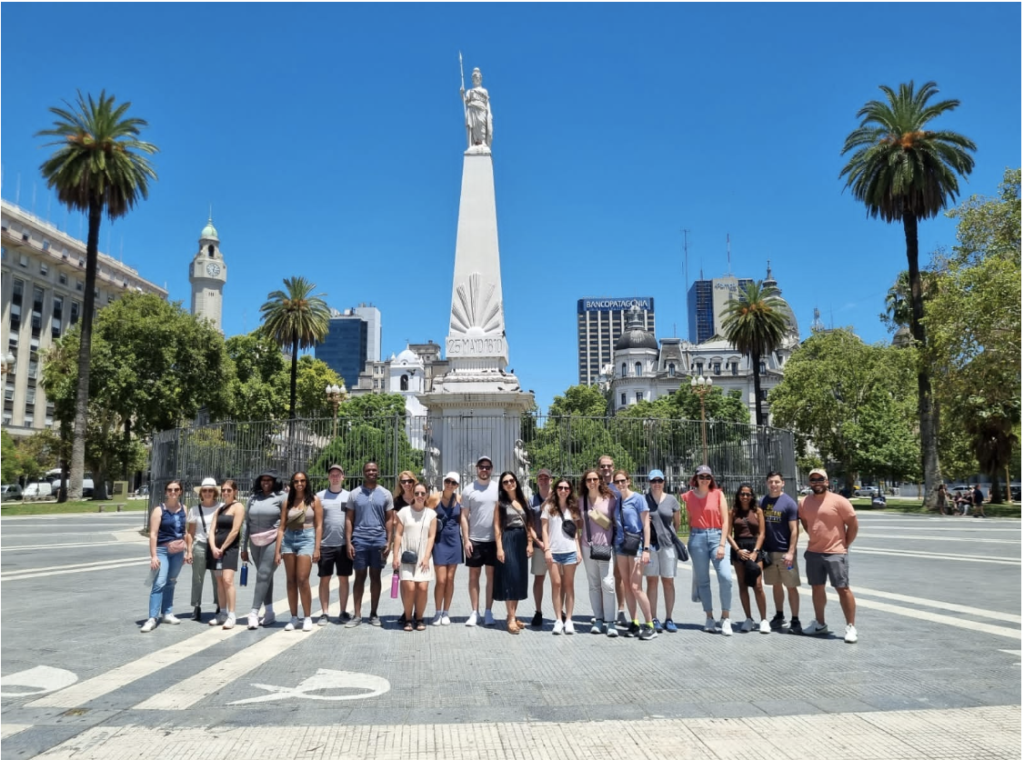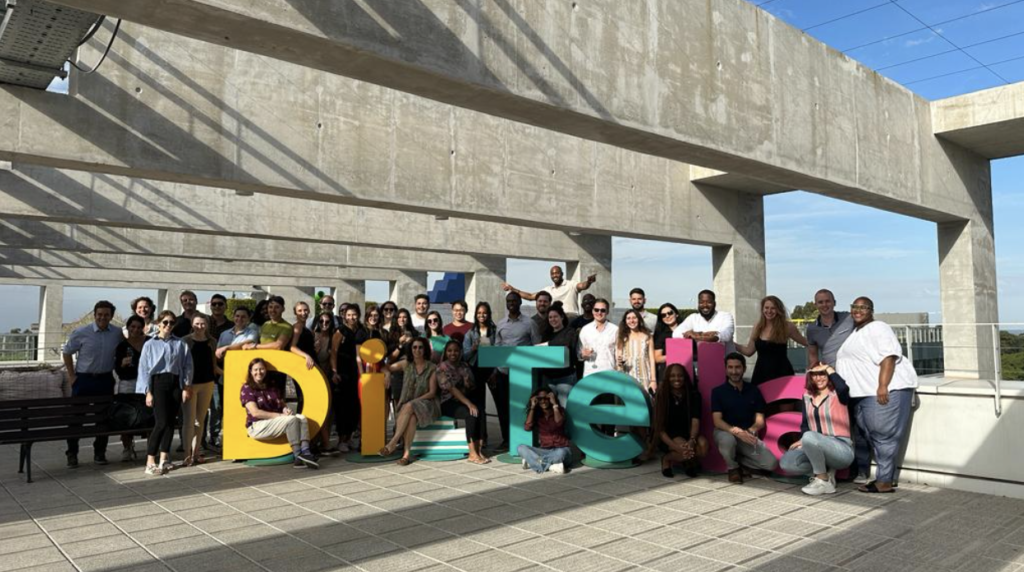Between the rich European architecture, culture, arts and wide, tree-lined avenues, some call Buenos Aires, the Paris of Latin America. Argentina is known for its Tango, steak, Malbec wine, colorful houses, theaters/arts and its picturesque landscapes. My family origins are from Argentina, I have come to know the culture, food, cities, Patagonia and it’s been an enriching opportunity to study abroad in Buenos Aires, Argentina. Through my professional and academic experience, I have learned that in order to understand cultures and international businesses, it’s important to know the language, culture, economics, politics, social and technology sector to conduct business. When deciding between MBA study abroad programs, I was looking for an opportunity to couple my technology background with a deeper understanding of how growing and emerging markets do business. Through my study abroad program, I learned the tools to launch products, understand social business, and start businesses in Emerging Markets and in Latin America.

Touring Buenos Aires with my classmates. This photo is in front of the Plaza de Mayo near the Casa Rosada (the presidential building).
I attended the University of Torcuato Di Tella (UTDT) MBA immersion program, focusing on doing Business in Argentina: Understanding Emerging Markets. My program consisted of three Modules over the course of three weeks. In these modules, we were taught social business strategies, international business strategies and operations in Emerging Markets. Our coursework consisted of case studies, action-based learning, speaker presentations and discussions on Latin American/Argentinian culture. Additionally, we had the opportunity to hear from startup founders in manufacturing, and leaders of MercadoLibre, Veng (a technology services company specialized in the space and satellite industry), ministry of health and La Martina (an Argentina Polo sports and leisure clothing manufacturer).
My classmates and I in front of the Di Tella sign on our last day.
Digital Trends in Latin America: The MercadoLibre
Having learned about and met leaders of technology startups and companies in Argentina, I became fascinated by the MercadoLibre, an e-commerce company focused on serving the nascent but fast-growing Latin American markets. It can be described as the Amazon of Latin America. In each of our three courses, MercadoLibre was showcased as an Argentine success story, a powerful example of competitive advantage and growth across different emerging economies and has pushed the limits of innovation in Latin America. MercadoLibre was founded in 1999 by MBA Graduates at Stanford Graduate School of Business, Hernan Kaza and Marcos Galperin (current CEO). MercadoLibre was initially launched as an Internet auction site into Latin America’s largest online e-commerce platform, tailoring their services to specific country markets. Its e-commerce platform enabled individual vendors to sell their products online, resembling its original business model to eBay’s. MercadoLibre’s biggest competitor, Amazon, entered the Brazil market (the largest Latin American market) in 2012, reaching new levels of competition for both companies, and since Amazon’s entry, it has been MercadoLibre’s greatest competition in e-commerce scale and scope. Marcos Galperin has credited the success of the MercadoLibre because they built the platform from the ground up and developed a unique, technological and commercial solution designed to meet the distinctive cultural and geographical challenges of operating an online trading solution in Latin America.
https://www.mercadolibre.com.ar/
An example of how MercadoLibre helped meet a Latin American unmet need was through the launch of MercadoPago to its product portfolio. In 2003, Mercado Pago launched as an online payment service (similar to PayPal) to help people and businesses without credit, it created an escrow service with intermediary agents to help facilitate purchases in cash made by buyers without credit cards to purchase products on MercadoLibre, solving a Latin-American-wide problem of lack of credit card penetration.
Over the years, MercadoLibre experienced fast-growth through gaining critical mass of both buyers and sellers, expanding into Latin American markets, developing a Global Brand, partnering with Latin American trading portals, and using off-the-shelf software in the market. MercadoLibre has invested in dozens of companies and acquired fifteen tech companies across the region. It was also the first Latin American tech company to trade publicly on NASDAQ in a 2007 IPO, raising US$ 289M. By 2018, in Latin America, 47% of online shoppers buy on MercadoLibre while only 17% use Amazon. In Mexico, where Amazon offers similar services to the U.S., 38% of online shoppers still use MercadoLibre while just 21% use Amazon.
Today, the company is far from the only e-commerce site operating in Latin America, but it puts up fierce competition against Amazon’s expansion into the region. MercadoLibre has transformed into a multi-business corporation focused on dominating the e-commerce market in Latin America, expanding its product offerings and geographic footprint. As my professors described it, MercadoLibre represents opportunity, innovation and the future of Latin America. Like Amazon, the MercadoLibre offers distinct services and solutions within its MercadoLibre portfolio:
- MercadoLibre Marketplace: online auction and purchase/selling platform
- MercadoEnvios: Shipping and logistics services
- MercadoCredito: Lending solution using proprietary risk model w/unique data
- MercadoShops: Service for users to create online stores (e.g., Shopify)
- MercadoPago: Fintech solution for users (e.g., PayPal with digital wallets)
- MercadoLibre Classifieds: Online classified listing service (e.g., Craigslist)
- MercadoLibre Publicidad: Company’s advertising platform (allows ads on the Mercado webpages)
With more than 20 years of experience, MercadoLibre is the #1 marketplace in Latin America and one of the top 10 most visited e-commerce websites in the world. Despite Amazon’s success in the U.S., it continues to compete with MercadoLibre in the Latin America market, expanding only in Argentina, Brazil, Mexico and Chile. The future of the MercadoLibre holds a lot of potential for further expansion of its product offering, its investments in logistics and payment infrastructure as well as marketing and branding. The CEO, Marcos Galperin, wants to be the leader in retailing and financial services in Latin America and anticipates the company will risk profitability in the short-term to gain in the long-term.
Sources:


